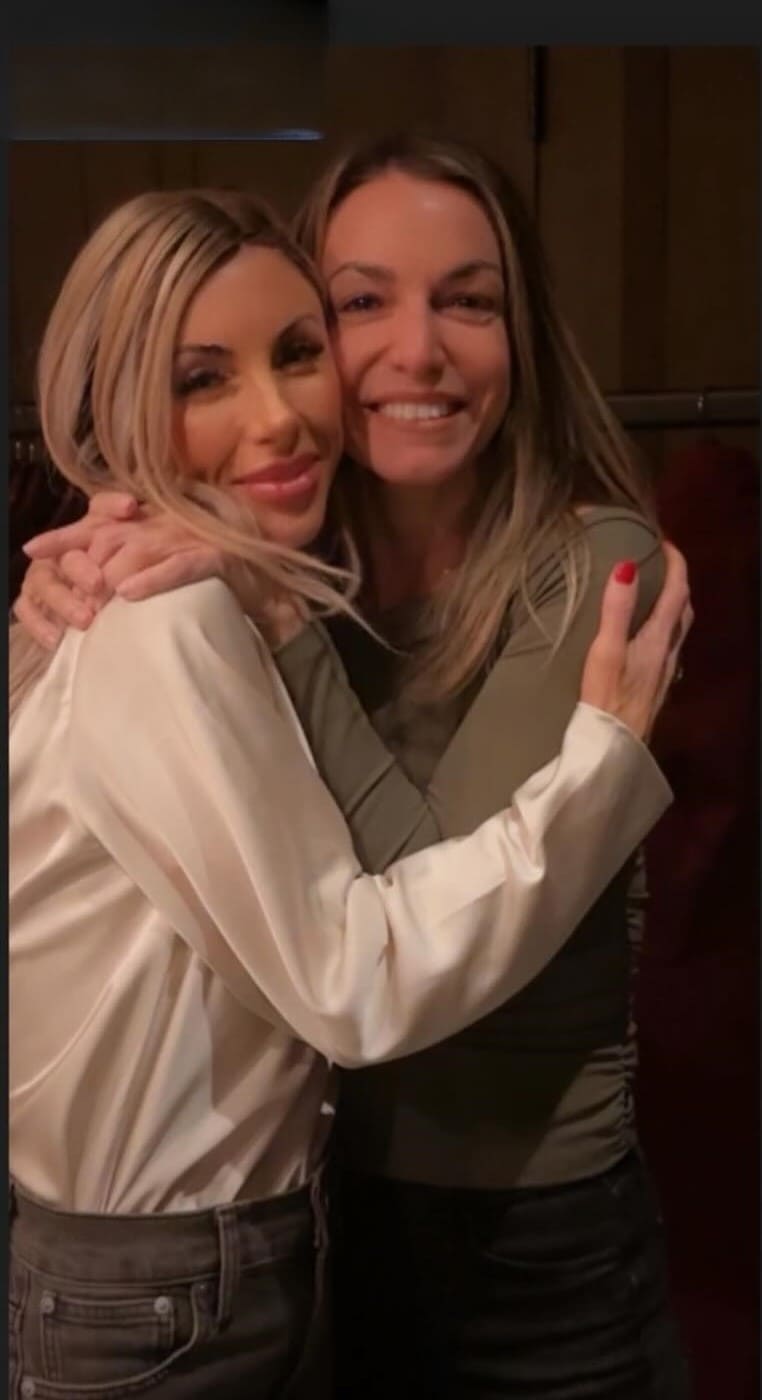The Karen Read trial has captivated the attention of millions across the United States, drawing widespread media coverage and sparking heated discussions on justice, accountability, and truth. From the outset, the case has been anything but ordinary, revealing a sequence of unexpected developments that no one could have anticipated. What began as a tragic death evolved into a high-profile legal saga that raised serious questions about law enforcement, forensic evidence, and the media’s role in shaping public opinion. In this blog post, we’ll explore the most surprising turns in the Karen Read trial—turns that have not only stunned the courtroom but also left a lasting impression on the national conscience.
1. A Tragic Night That Started It All

The Karen Read case centers on the death of Boston police officer John O’Keefe, who was found unresponsive outside a Canton home in January 2022. Karen Read, a professor and the officer’s girlfriend at the time, was quickly accused of hitting him with her SUV. But as the investigation unfolded, layers of doubt emerged. Questions were raised about the condition of the crime scene, whether proper procedures were followed, and if the initial narrative was rushed to judgment. The circumstances of that night laid the foundation for a series of revelations that would challenge everything assumed to be true about the case.
2. Conflicting Forensic Evidence
A cornerstone of the Karen Read trial was the forensic evidence, which initially seemed straightforward. Authorities claimed hair and tissue found on her vehicle linked her to the crime. However, independent forensic experts hired by Read’s defense uncovered discrepancies in the analysis. One of the most debated points was whether the injuries sustained by John O’Keefe could have been caused by the alleged impact. The contradiction in forensic interpretations led to widespread scrutiny of the state’s case and ignited public skepticism about the validity of the charges. Karen Read’s attorneys argued that the inconsistencies were too significant to ignore, and the jury was forced to consider whether forensic science was being used as a tool of truth or manipulation.
3. Surveillance Gaps and Missing Footage
Surveillance video can often be a decisive element in criminal investigations, but in the Karen Read case, gaps in video footage raised eyebrows. Prosecutors presented some surveillance recordings from the neighborhood, but several hours of potential footage were missing or never recovered. The defense team highlighted these absences, questioning whether key evidence had been lost—or worse, suppressed. This missing data fueled conspiracy theories and cast doubts on the transparency of the investigation. The void in digital evidence became a haunting presence throughout the trial, a symbol of the many unanswered questions that continued to plague the courtroom.
4. A Community Torn Apart
As the Karen Read case unfolded, it had a polarizing effect on the Canton community. Supporters of both Read and the victim’s family staged protests and counter-protests, turning a local tragedy into a divisive cultural moment. Social media played a pivotal role in amplifying voices on both sides, with hashtags trending nationally and amateur sleuths dissecting every court filing. The public’s investment in the case turned the trial into a media spectacle, influencing perceptions and creating pressure on the judicial system. This intense community involvement illustrated how personal and complex the pursuit of justice can become, especially when the lines between fact and opinion blur.
5. Whistleblowers and Insider Testimony
Perhaps one of the most surprising elements of the Karen Read trial was the emergence of whistleblowers within the law enforcement community. Several insiders came forward with claims of misconduct and procedural errors. One officer testified that there were internal disagreements about how evidence was handled. These testimonies suggested that not all was well behind the scenes of the investigation. The fact that law enforcement officials were willing to speak out against their own department was a significant turn that suggested a potential cover-up or, at the very least, deep institutional flaws. These revelations shook public trust and gave new weight to Read’s claims of innocence.
6. The Role of Alcohol and Memory Gaps
The events of the night in question involved alcohol, which became a pivotal factor in assessing credibility. Karen Read admitted to drinking that evening, as did several other witnesses. But the impact of alcohol on memory and perception became a critical point of contention. Could witnesses accurately recall the night’s events? Could Karen Read herself be relied upon to remember the timeline with clarity? The trial became a psychological as well as legal drama, exploring how impaired memory could be weaponized or misinterpreted. This theme added yet another layer of complexity to the already volatile proceedings.
7. Media Bias and Sensationalism

The role of media in the Karen Read case cannot be understated. From cable news to podcasts and TikTok videos, every turn in the trial was dissected and debated in real time. The media’s portrayal of Read fluctuated from villain to victim depending on the outlet. This inconsistency raised important questions about bias and the influence of public narrative on legal outcomes. The sensational coverage often prioritized clicks over facts, leading to widespread misinformation. The courtroom became a stage, and every development was a headline, forcing the public to question where justice truly resides—in the facts, or in the framing?
8. Mysterious Injuries and Alternate Theories
One of the defense’s most compelling arguments was the possibility that John O’Keefe’s injuries were not caused by Karen Read’s vehicle, but rather inflicted elsewhere. Medical experts testified that certain wounds were inconsistent with a car accident, pointing instead to blunt force trauma. This led to alternate theories, including the possibility that O’Keefe was assaulted before being left outside. These theories were bolstered by inconsistent witness statements and physical anomalies found during the autopsy. The notion that someone else could be responsible shifted the trial’s focus and introduced reasonable doubt that was hard to ignore.
9. Timeline Discrepancies and Digital Data
In an age where digital footprints are everywhere, the Karen Read trial leaned heavily on cell phone data, text messages, and timestamps. However, these sources revealed conflicting timelines. Call logs didn’t align with statements made by key witnesses. GPS data contradicted where people said they were. These inconsistencies created confusion and added to the growing chorus questioning the reliability of the prosecution’s case. Technology, which was expected to clarify the night’s events, instead muddied the waters. As the jury pored over data, it became clear that truth wasn’t just about facts—it was about interpretation.
10. Expert Witnesses Under Fire
Expert witnesses are often seen as neutral parties, but in this trial, their credibility came under intense scrutiny. Some were accused of having conflicts of interest or lacking proper credentials. Karen Read’s team challenged the objectivity of certain forensic analysts, while prosecutors questioned the legitimacy of independent experts brought by the defense. The result was a war of credentials that confused the jury and revealed how science can be shaped by narrative. In a case already filled with ambiguity, the battle of experts only deepened the mystery and further divided public opinion.
11. Eyewitness Testimonies Fall Apart
Eyewitness accounts can be persuasive in court, but in the Karen Read trial, several key witnesses recanted or altered their statements. One neighbor initially claimed to have heard a loud crash, only to later admit uncertainty about the timing. These inconsistencies weakened the prosecution’s narrative and bolstered claims that Karen Read was being framed. The reliability of eyewitnesses, especially under community pressure and media scrutiny, became a topic of deep concern.
12. Mysterious Delay in Charges

Another confusing aspect of the Karen Read trial was the delay in formal charges. Despite early suspicions, it took months before charges were filed. The delay fueled speculation that authorities were unsure of the evidence. Critics argued that the timeline showed hesitation, suggesting that prosecutors may not have had a strong case. Supporters of Read cited this delay as evidence of her innocence.
13. Independent Investigations Surface
In the absence of trust in official investigations, independent investigators and journalists stepped in. Several podcasts and YouTube channels conducted parallel investigations, surfacing documents, witness interviews, and expert opinions. These citizen-led inquiries often contradicted the state’s version of events and introduced alternate suspects. This movement showed the growing influence of public inquiry in modern justice.
14. Leaked Court Documents
At various points in the Karen Read trial, confidential court documents were leaked to the press. These leaks caused chaos, as media outlets scrambled to report unverified information. Some documents appeared to favor the defense, while others supported the prosecution. The leaks undermined the integrity of the proceedings and raised concerns about who was trying to influence public perception.
15. Anonymous Tips and Unsolved Leads
During the trial, anonymous tips were submitted to both defense and prosecution teams. Some of these tips pointed toward other possible suspects or provided new details about the night of the incident. While not all tips were verified, they highlighted the uncertainty surrounding the case. The defense argued that these unsolved leads should have been investigated more thoroughly.
16. Public Protests and Courtroom Disruptions
The Karen Read trial drew passionate crowds to the courthouse. Protesters on both sides chanted, held signs, and even clashed outside the courtroom. On more than one occasion, proceedings were delayed due to disruptions. The level of public emotion demonstrated just how deeply the case had touched the nation.
17. The Emotional Testimony of Karen Read
When Karen Read took the stand, the courtroom was silent. Her emotional testimony recounted her love for John O’Keefe and her shock at the accusations. She denied any wrongdoing and tearfully described the toll the trial had taken on her life. Her testimony was a turning point, humanizing her to the jury and reshaping public opinion.
18. Closing Arguments and National Impact

The closing arguments in the Karen Read trial were intense. The defense highlighted every contradiction and missing piece, while the prosecution focused on motive and circumstantial evidence. When the jury went into deliberation, the nation waited anxiously. Regardless of the verdict, the trial left a permanent mark on the national conversation about justice, trust, and truth.
Conclusion: 18 Surprising Turns That Shook the Nation
The Karen Read trial has become one of the most talked-about legal battles in recent American history. Each surprising turn—from questionable forensics and insider whistleblowers to media bias and alternate theories—revealed deeper cracks in the systems meant to deliver justice. For an audience watching closely in the USA, this case underscores the importance of transparency, fairness, and the right to a full and honest defense. While the final verdict may bring a legal conclusion, the questions it raised will resonate far beyond the courtroom. Karen Read’s story is not just about one woman’s trial—it’s about the nation’s collective reckoning with truth and justice.